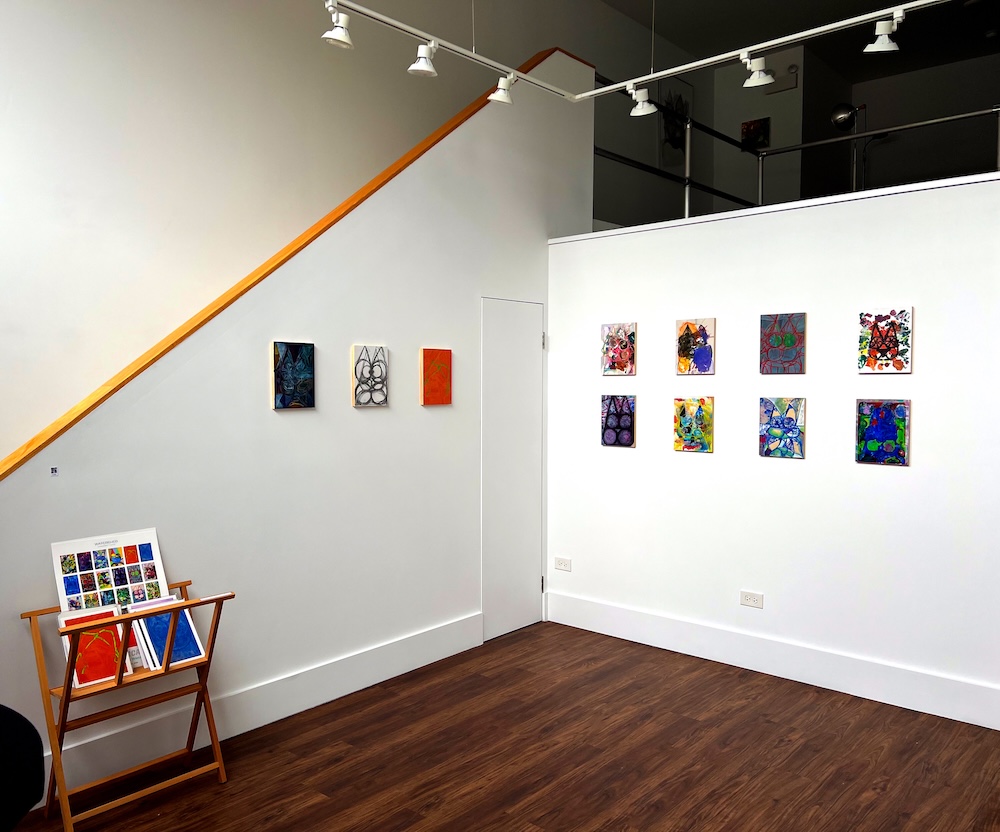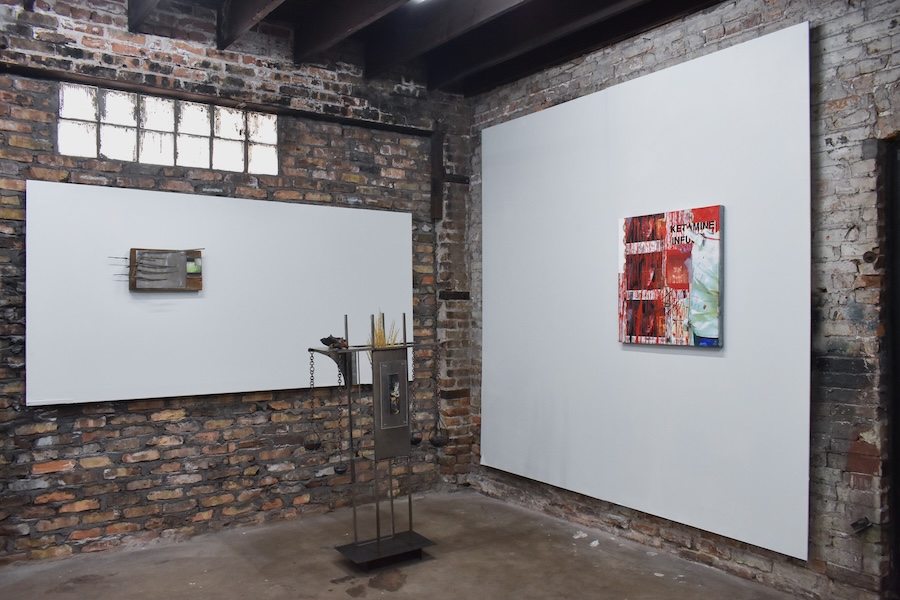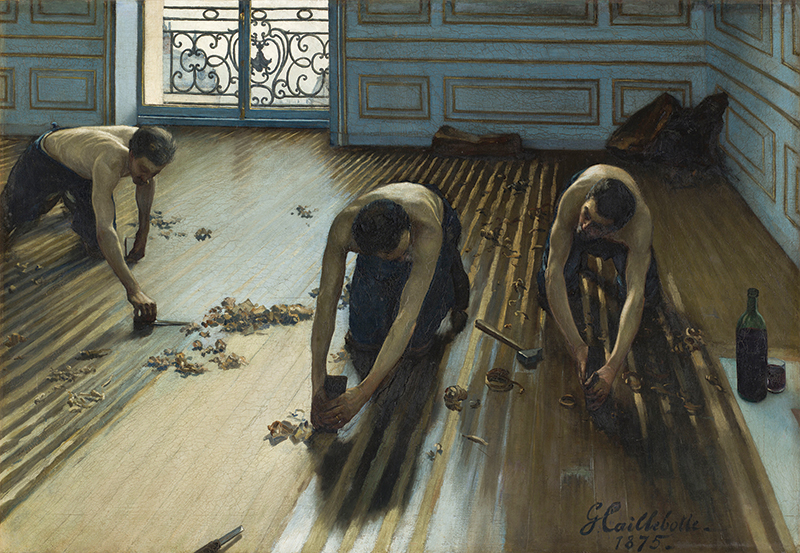Realizing Human Relationships with Nature through Art

BY FRANCK MERCURIO
In the history of Western art (and Western thought) there is a sense that we humans are separate from nature. Traditional landscape paintings provide prime examples of this perspective; from the frescoes of Classical antiquity to the romanticized paintings of the 19th century, Western artists have framed landscapes as picture windows with viewers safely distanced from the depicted “wildness.”
But as the environmental movements of the late 20th century gained momentum, artists began to reflect a different philosophy in their work: a growing awareness that humans are in fact an integral part of nature. Their subtext: the more we destroy ecological systems, the faster our own potential demise as a species.
Currently, the devastating effects of climate change, dwindling biodiversity, and unprecedented levels of pollution, have lent a greater urgency to the voices of artists. Two Chicago group exhibitions in 2013 featured a range of international artists who explored the effects of environmental degradation in their art: Climate of Uncertainty at the DePaul Art Museum and Suicide Narcissus at the Renaissance Society. Other recent shows focused on the responses of local, individual artists to environmental issues including the journalistic photographs of Terry Evans in Fractured: The North Dakota Oil Fields at the Field Museum and the conceptual installations of Heidi Norton: Prismatic Nature at the Elmhurst Art Museum.
Through a partnership with the Natural Resources Defense Council (NRDC), EXPO CHICAGO has been especially committed to exhibiting the works of contemporary artists concerned with human/nature relationships. In 2012 NRDC presented two installations at EXPO, drawing attention to the Chicago River and the challenges of fresh water ecology: Maya Lin’s Chicago River and Gordon Matta-Clark’s Garbage Wall. In 2013, NRDC and EXPO continued the partnership by bringing the works of Seattle artist and environmental advocate Vaughn Bell to Chicago.
This year at EXPO (held September 18-21), NRDC will present a large-scale installation by Chicago and Los Angeles-based artist Jenny Kendler. Titled Tell It To The Birds, the installation will be created within a typical 10 by 40 foot EXPO gallery booth and will feature photo-print wallpaper of lichens (with images sourced through lichenologists from the Field Museum) and shelves displaying some 25 of Kendler’s signature porcelain bird sculptures. The centerpiece will be a dome-shaped structure that invites visitors to “communicate with the birds”—participants’ human voices will be “translated” into bird songs through a custom-made software application.
This whimsical piece has at its heart a serious message and a subtle call to action, encouraging visitors to consider their own personal ties to the natural environment. Explains Kendler, “Cross species empathy is the first step in protecting nature.”
Kendler is NRDC’s first-ever artist-in-residence, a position that has allowed her to create larger and more public works, such as Tell It To The Birds. It has also enabled the artist to work with the organization’s scientists to communicate facts about the environment to a wider audience through her art.
“It’s been a great collaborative experience,” says Kendler about her residency. “The NRDC staff members are respectful of the artistic process.”
Elizabeth Corr, the NRDC’s manager of arts partnerships and events developed the residency program when NRDC was seeking to expand its audience and engage a new environmental audience beyond the organization’s core constituency.
“We were looking for ways to more effectively reach out to more diverse groups of people,” says Corr. “Artists bring a visual component to the discussion that is critical.”
The Artist-in-Residence program has had unexpected results for NRDC. “There’s been a mutual back-and-forth between scientists and Jenny,” explains Corr. “Staff members now think about their work in different ways.”
Case in point: a performative piece envisioned by Kendler to help distribute seeds of native milkweed plants, vital for the continued survival of monarch butterflies whose populations have plummeted in recent years. Titled Milkweed Dispersal Balloons, the piece includes performers giving away helium-filled balloons containing milkweed seeds to the general public.
Kendler describes Milkweed Dispersal Balloons as “a beautiful gesture with a real, practical effect.” The performance piece empowers the everyday person, who might not know about the monarch’s plight, to be the agent of positive change through the distribution of milkweed plants. Funded by a grant from the Pulitzer Arts Foundation and the Rauschenberg Foundation, Milkweed Dispersal Balloons debuted in St. Louis at the end of July and in Chicago in early September.
Artists such as Kendler and organizations such as NRDC, are creating dialogues between contemporary artists, environmental scientists, and the art-viewing public.
Through the visual communication of art, they are encouraging all of us to contemplate and re-evaluate our relationships with and connections to nature.
Top image: Artist Jenny Kendler distributing her Milkweed Dispersal Balloons. Photo: Carly Hilo for the Pulitzer Arts Foundation






